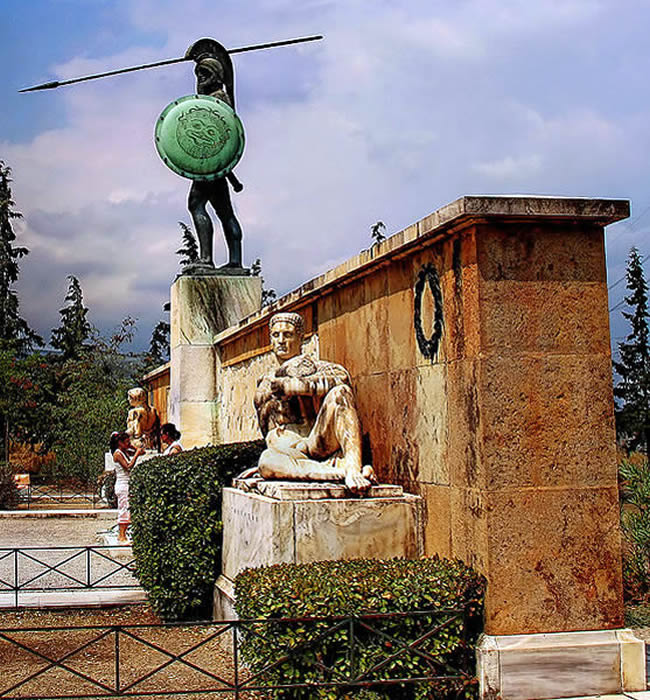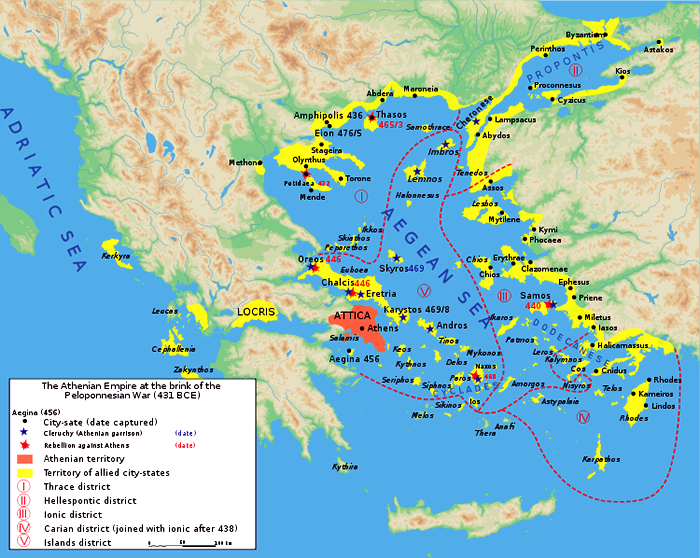 Athenian Empire
Athenian Empire

(Text by Duane R. Hurst © 2013)
Click on a link to view its information and pictures.
|
ATHENS LINKS: Significant Event: Battle of Marathon in 490 BC Battle of Salamis in 480 BC Battle of Thermopylae in 480 BC Construction of Parthenon Peloponnesian War 431-404 BC Main Cities: Athens Time: 1500-330 BC Language: Greek Personage: Alcibiades; Aristotle; Homer; Pericles; Plato; Socrates Religion: Greek Gods Related Country: Greece |
|
|
Brief History: I have included only a few items concerning the history of this empire. A good source for more details can be found on Wikipedia or in history books. EARLY YEARS: Ancient Greeks accepted the world map of Herodotus, which emphasized the central importance of Greece. The city-state of Athens centered around a citadel called the Acropolis. A large Statue of Athena was situated there to protect the city. Circa 1412 BC, Athens was a center of the Mycenaean civilization. Its judicial Council originally met on the Areopagus. In 594 BC, the Council appointed Solon to create a new constitution, which was the foundation for Athenian democracy. WARS WITH PERSIA: From 499 to 493 BC, Ionian Cities revolted against the Persian Empire and received military support from Athens and Eretria in 498 BC. King Darius defeated their forces in the Battle of Ephesus and at other locations, quashed the revolt and mustered an army to punish the mainland Greeks. In 492 BC, Mardonius (son-in-law to Darius) reconquered Thrace and made Macedon a client state. A storm near Mount Athos destroyed many of the Persian ships, which halted the campaign. Darius sent warning to the Greek city-states in 491 BC, but Athens and Sparta executed the ambassadors. A large naval force under admiral Datis and troops under Artaphemes succeeded in enslaving people from many Greek islands and razed Eretria. Although they landed in the bay of Marathon, Athenian and troops from Plataea soundly routed the Persians at the Battle of Marathon in August/September 490 BC (see Picture). In 480 BC, Persian king Xerxes I personally led a large army and naval force against Greece. They crossed the Hellespont unopposed. Greeks originally planned to stop the Persians at the Vale of Tempe, but reconsidered that Thermopylae was better suited. The main Spartan army delayed due to a religious ceremony, but king Leonidas I led his personal guard of 300 men, who all died in the Battle of Thermopylae. Simultaneously, Greek naval forces defeated Persian ships in the Battle of Artemisium. These actions allowed Greek city-states to prepare a defense. Athenians abandoned their city for safety on Salamis Island. During the Battle of Salamis in 480 BC, the Persian admiral (Ariabignes) died and a combined Greek naval fleet defeated the forces of King Xerxes. Although Xerxes departed for home, he left a powerful army behind, under the command of general Mardonius. In August 479 BC, a combined Greek force under Spartan command defeated and killed Mardonius in the Battle of Plataea. On the same day a Greek fleet under Spartan king Leotychides routed a Persian army of 60,000 men at Mount Mycale and destroyed their ships. DELIAN LEAGUE: Athens formed the Delian League in 478 BC. The 150-173 member city-states pledged to fight the Persian empire. The League's official headquarters was on the island of Delos. In 454 BC, Pericles moved the League's treasury from Delos to Athens, ostensibly to protect it after Persian general Megabyzus defeated Athenian forces that aided a revolt in Egypt. Athens also exercised increasing control over League members, which led to several unsuccessful revolts on Naxos and Thasos. EMPIRE AND PELOPONNESIAN WAR: (454-404 BC) In 431 BC, a three-phase war started between Athens and the Spartan-led Peloponnesian League. This ended in collapse of the Athenian Empire and Spartan conquest of Athens. Phase One: Archidamian War In 440 BC, Samos revolted against Athens and received immediate support from Persia. Sparta considered aiding the rebels, but Corinth vetoed the idea. Athens crushed the revolt and peace remained between the two Leagues. Conflict loomed after Athens aided the island of Corcyra against Corinth in the Battle of Sybota (433 BC). Athens also provoked Megara, a Spartan ally, with stringent trade sanctions. Corinth pressured Sparta, under King Archidamus II, to resist Athenian actions. Spartan land forces invaded Athenian territory but could not triumph over naval forces, and the populous found refuge within the Long Walls. Sparta lost battles at Pylos and Sphacteria in 425 BC. This phase ended in March 421 BC with a Peace of Nicias (aka Fifty-Year Peace). Phase Two: Sicilian Expedition In 415 BC, Athens sent a large expeditionary army and naval force to attack Syracuse in Sicily. Rationale was to support their Sicilian allies, who were Ionian people similar to those of Athens. Sparta and Syracuse were allied Dorians. Athens actually planned to use Sicily as a staging area for attacks on Carthage and Magna Graecia. Alcibiades led the ill-fated expedition, but defected to Spartans at Syracuse when enemies in Athens plotted for his arrest on false charges. General Nicias landed a force of 5,000 infantry but procrastinated his attack on Syracuse, which allowed Sparta to send aid. In 414 BC, general Gylippus defeated the Athenians in a series of battles. Nicias also lost a sea battle, failed to withdraw, and his entire force died or became slaves. Alcibiades returned to Athens and, surprisingly, led the military in regaining much of the empire's lost territory. Phase Three: Decelean or Ionian War Sparta, with support from Persia, undermined Athens by aiding rebellions in Ionia and the Aegean. In 406 BC, Spartan commander Lysander defeated an Athenian fleet at Notium (near Claros). Spartan forces also closed a crucial silver mine, freed 20,000 slaves and encouraged Ionian allies to abandon the Delian League. Lack of support from Sparta and its allies resulted in Athens quashing the rebellion. Athens defeated Spartan fleets at Cyzicus (410 BC) and Arginusae (406 BC). A foolish decision to censure triumphant Athenian commanders allowed Lysander to capture the source of Athens' grain, which resulted in starvation and Athenian surrender. He also defeated the Athenian fleet at Aegospotami in 405 BC. |
|
|
© Page Publisher: Duane R. Hurst
|


